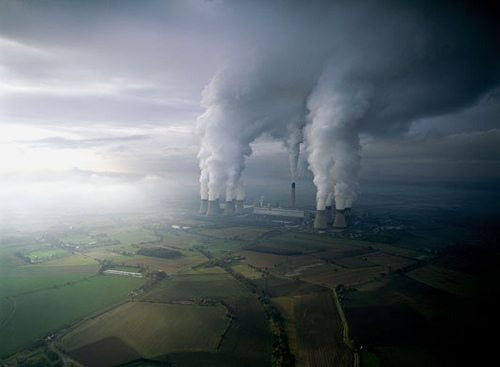

Energy
Closure of UK Coal and Nuclear Plants to Create Electricity Supply Gap of Up To 55% by 2025
New report: closure of UK coal and nuclear plants to create electricity supply gap of up to 55% by 2025
- UK has neither the time, resources nor enough people with the right skills to build sufficient gas-fired or nuclear power stations to plug the gap
- Greater reliance on interconnectors likely to be less secure and more expensive
UK Government’s policy to close all coal-fired power stations by 2025, combined with the retirement of the majority of the UK’s ageing nuclear fleet and growing electricity demand will leave the UK facing a 40-55% electricity supply gap, according to a new report by the Institution of Mechanical Engineers.
The Engineering the UK Electricity Gap report says plans to plug the gap by building Combined Cycle Gas Turbine (CCGT) plants are unrealistic, as the UK would need to build about 30 new CCGT plants in less than 10 years. The UK has built just four CCGTs in the last 10 years, closed one and eight other power stations. In addition, in 2005 twenty nuclear sites were listed for decommissioning, leaving a significant gap to be filled. According to the report, the country has neither the resources nor enough people with the right skills to build this many power stations in time. It is already too late for any other nuclear reactors to be planned and built by the coal ‘shut-off’ target of 2025, other than Hinkley Point C.
The report also highlights that a greater reliance on interconnectors to import electricity from Europe and Scandinavia is likely to lead to higher electricity costs and less energy security.
Dr Jenifer Baxter, Head of Energy and Environment at the Institution of Mechanical Engineers, and Lead Author of the report said:
“The UK is facing an electricity supply crisis. As the UK population rises and with the greater use of electricity use in transport and heating it looks almost certain that electricity demand is going to rise.
“However with little or no focus on reducing electricity demand, the retirement of the majority of the country’s ageing nuclear fleet, recent proposals to phase out coal-fired power by 2025 and the cut in renewable energy subsidies, the UK is on course to produce even less electricity than it does at the moment.
“We cannot rely on CCGTs alone to plug this gap, as we have neither the time, resources nor enough people with the right skills to build sufficient power plants. Electricity imports will put the UK’s electricity supply at the mercy of the markets, weather and politics of other countries, making electricity less secure and less affordable.
“Currently there are insufficient incentives for companies to invest in any sort of electricity infrastructure or innovation and worryingly even the Government’s own energy calculator does not allow for the scenarios that new energy policy points towards. Under current policy, it is almost impossible for UK electricity demand to be met by 2025.
“Government needs to take urgent action to work with industry to create a clear pathway with timeframes and milestones for new electricity infrastructure to be built including fossil fuel plants, nuclear power, energy storage and combined heat and power. With CCS now out of the picture, new low carbon innovations must be supported over the course of the next 10 years.
“We need to ensure we have the right skills and knowledge in place to enable this key infrastructure to be built. The UK Infrastructure Commission must also take urgent action to prioritise greater energy efficiency by industry and clarify financial incentives for research and development of renewables, energy storage and combined heat and power.”
The Engineering the UK Electricity Gap report’s recommendations are:
- The UK Infrastructure Commission should assess the necessary incentives for industry and the public to reduce the demand on the electricity system through engineering efficiencies into processes and equipment, awareness raising and advocacy.
- The UK Infrastructure Commission must urgently implement the changes necessary across the industry and supply chain to deliver security of electricity supply with no coal-fired generation. These include investment in research and development activities for renewables, energy storage, combined heat and power and innovation in power station design and build.
- Collaboratively the UK Government and its delivery bodies, along with industry, should review the capacity in the supply chains to deliver the construction of the ‘most likely’ new power infrastructure. This includes identifying timeframes and milestones for conventional and unconventional power generation build (fossil fuel, nuclear, energy storage, combined heat and power and off-grid options) along with growth in skills and knowledge within the UK to meet the potential increase in demand.
To download the full Engineering the UK Electricity Gap report click on the link at the top of this email.
































